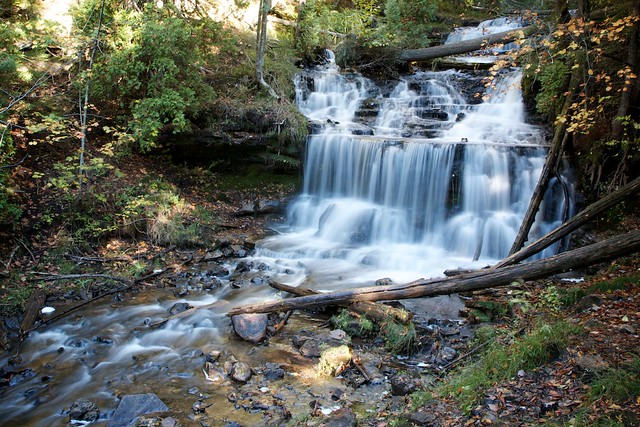One area of photography that I find challenging, yet rewarding, is doing an action pan. To make a successful panning shot, you need to slow down your shutter speed. However, this makes it difficult to get a sharp image because you are taking a photo of something that is moving very fast. So what’s the best technique to do this?
Let’s start with the camera setup. You’ll want your camera in continuous shooting mode, and trust me when I say you will capture a lot of bad images for every good one. Next, you’ll want to switch to shutter priority. This is Tv mode on Canon cameras or S mode on Nikon. Set your shutter speed to something slower than you are used to. Maybe 1/50th or 1/100th depending on what you are capturing. Finally, you’ll want a moderate telephoto lens to make this most effective. A 70-200mm lens would be a minimum zoom you would want. A 300mm or 400mm lens would be better if you are trying to track wildlife at a greater distance.
Now, the key here is to practice keeping your subject in the exact same spot in your camera’s viewfinder. Even if the subject is moving very fast (which this technique works best with), you’ll want to follow the path of the subject very closely. When the framing matches the look you want to attain, hold down your shutter and let your camera capture a bunch of shots. After doing this, you can usually go back and look at what you have on the camera, but typically you won’t know if you really have any keepers until later on when you look at your photos on a computer. Let’s look at some examples.
First, here’s an example of a shot I took a couple of years back. There was a winter X-games type of event at a local track, and it was very entertaining to watch.

Typically on a fast action shot like this, you’ll want as fast of a shutter speed as possible to freeze the motion and get a sharp frame. 1/1000 of a second, or even higher is desirable. However, I really wanted to blur out the background and capture the feel of this racer traveling so quickly. So I slowed down my shutter to 1/200 of a second and did my best to pan with the racer. When you are photographing something in an environment like this where the subject will be on a single plane (racing along level ground), it’s helpful to have a monopod to help take out some of your handshake. I mounted my camera on a Manfrotto monopod while capturing this particular event.
Here’s another more recent example at an airshow this past summer.

In this situation, a monopod isn’t going to do you any good. The aircraft that are performing are traveling both horizontally relative to the ground as well as vertically, so you’ll need the flexibility of capturing handheld. Here I slowed down the shutter to around 1/100 of a second. If I could go back in time, I would have probably slowed it down a little further still, to 1/50th or 1/30th even. That would have blurred out the car in the foreground even more. Again, the key is you need to keep your subject in the middle of the viewfinder as you are taking photos. This way, even though the subject is moving fast, the relative movement to your camera’s view is very slow. That’s the only way you are going to catch a sharp image.
The other thing to keep in mind when photographing aircraft with propellers, you really want to have a slow shutter speed at all times. If you use a high shutter speed to capture a prop-driven airplane, you’ll freeze the prop in mid-air and it will look like the airplane is falling out of the sky. It doesn’t really turn out well at all, so keep that shutter speed down!
While it might not be too often when you’ll be in a situation where you want a shot like this, it’s not hard to practice this technique so you are ready for the real deal. Just stand on any busy street corner and try to capture shots of cars as they drive by. This gives you a chance to get used to tracking subjects, so the next time you are at a sporting event or out photographing wildlife, you’ll be ready.


 http://wistia.com/learning/get-creative-with-lenses
http://wistia.com/learning/get-creative-with-lenses


